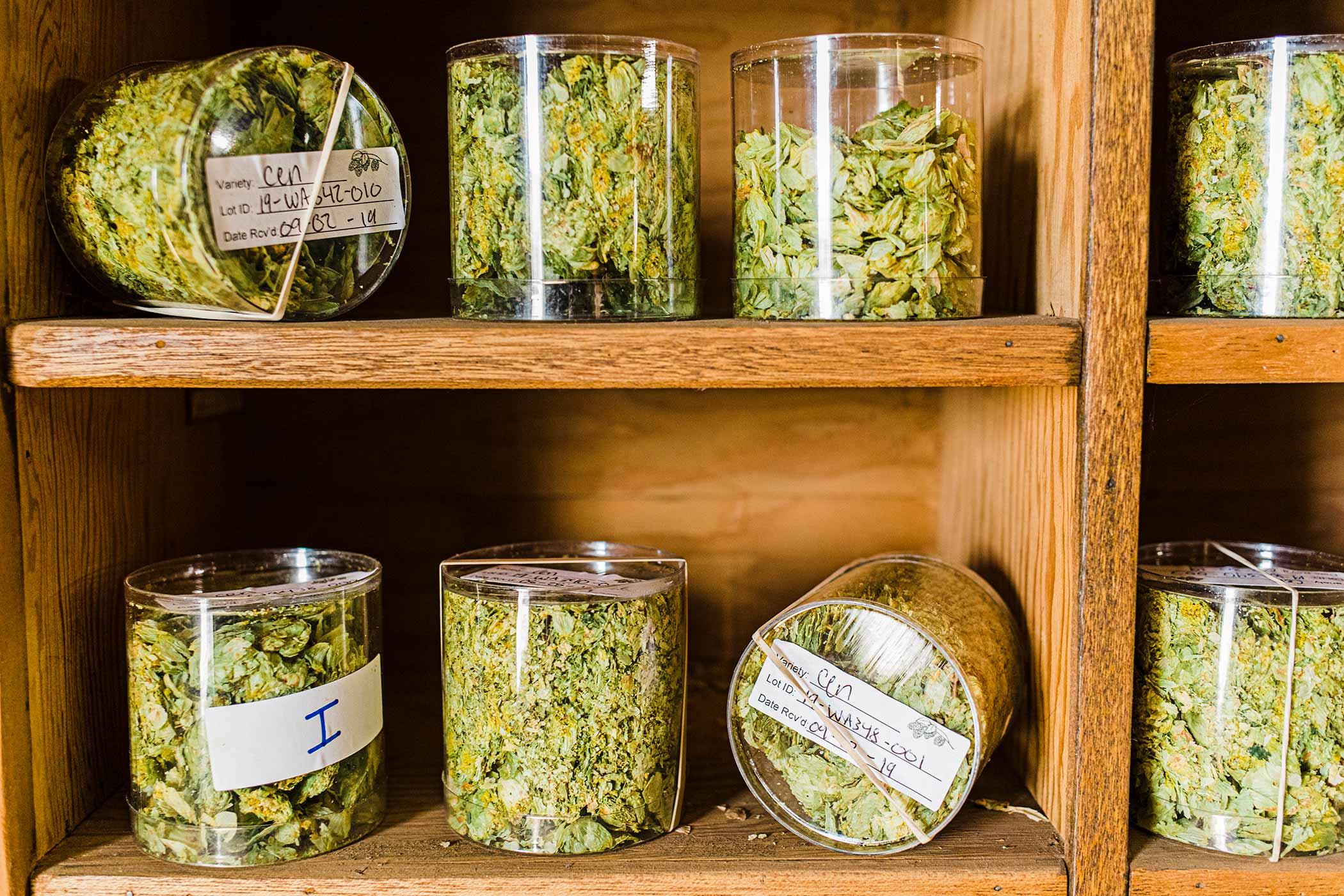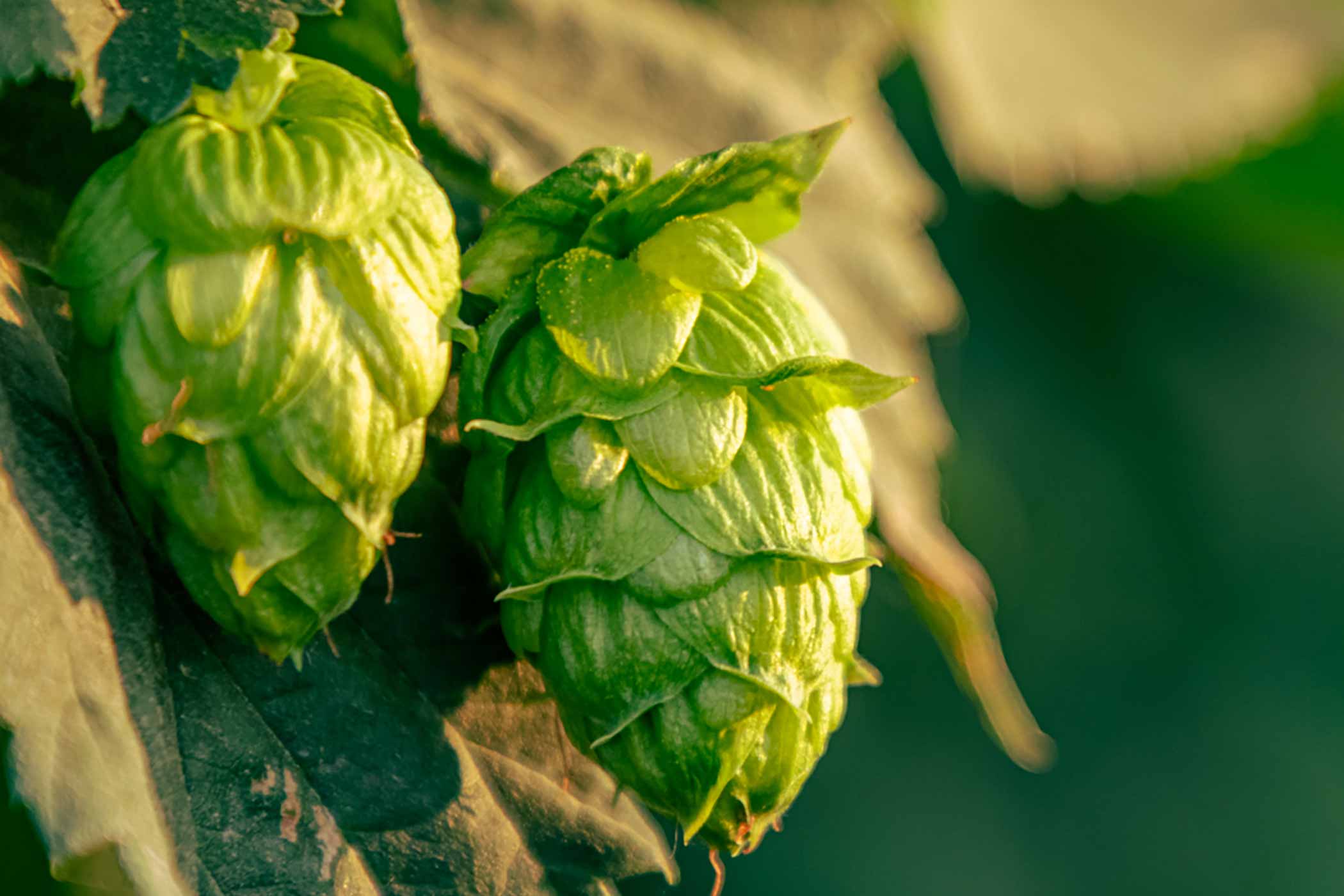Shop
The Top Hops for Thiols
Why your beers smell so good.
This is a paid, sponsored post presented by our friends at Yakima Valley Hops.
Why do we love IPAs? Seriously, think about your answer to the question. For us, it’s because of one little cone on a bine and all the goodies inside of it that bring us a theme-park full of flavors—dank and resin-y, citrus-y and piney, tropical and juicy.
Now more than ever consumers are clamoring for the flowering plant in the hemp family that gives your beers their characteristic aroma and flavor. In the American craft beer industry, we feel very confident saying that hops are the hottest ingredient in beer at this moment.
In fact, in Untappd’s yearly roundup of the highest-rated styles of the year, the triple New England hazy IPA finished first with a 4.19 average rating.
The numbers don’t lie. According to data last year from NielsenIQ analyzed by Bump Williams Consulting (BWC), hazy imperial/double/triple IPA dollar sales increased +128.7% to $33.3 million, more than doubling. And overall, IPAs still account for 46% of craft dollar share.
So what if we told you that brewers can actually make their IPAs juicier, more aromatic?
That hazies, West Coasts, American IPAs, and other predominantly hop-forward styles could pack a stronger aromatic punch?
Would your mind go ???????????? all at once.
Probably and then you’d ask us: How? Why? And where can I try some of those bigger, bolder beers?
Well, the short answer is Science with a capital S. It’s pretty cool. And luckily for us, more and more hop growers, companies, and brewers themselves are diving down this deep rabbit hole into a wonderland of hops, unlocking the secrets inside the very cones themselves to punchier, juicier, more aromatic beers.
And it all starts with one teeny, tiny little word that will rock your whole world: thiols.
What Are Thiols and How Do They Impact Beer?
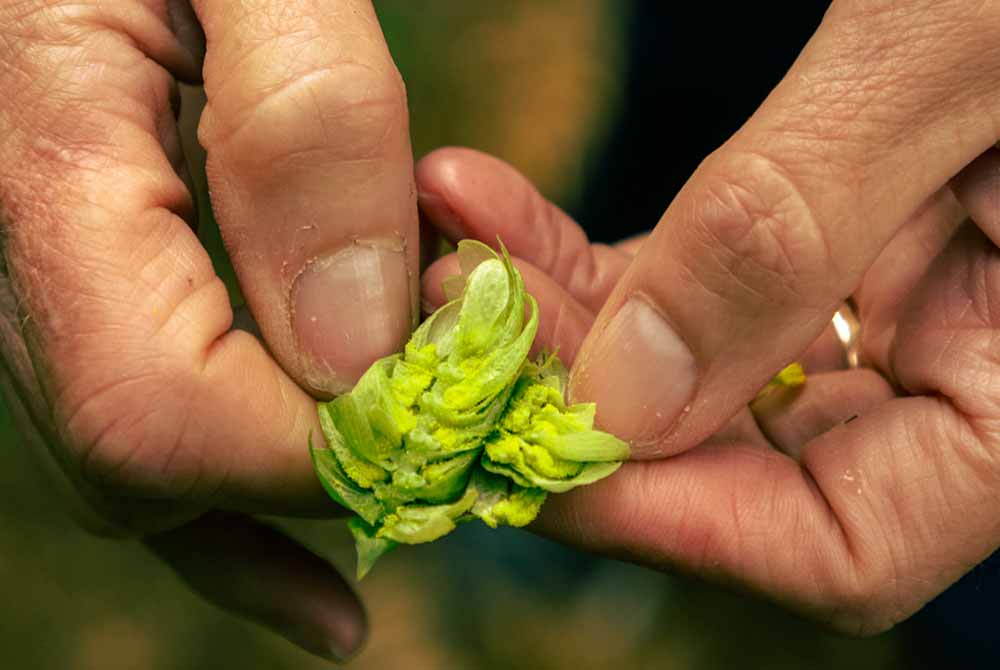
Photography courtesy of Yakima Valley Hops
Essentially organic sulfur compounds found in various agricultural products including fruit, hops, and even grain, thiols are naturally existing fragrant elements.
“Thiol compounds are really just highly aromatic compounds,” says Laura Burns, director of research and development at Omega Yeast in another Next Glass article. “Thinking about hops for the brewing industry, hops have a lot of different thiol compounds, but the ones that are more fruit driven are 3SH and 4MMP—passion fruit, grapefruit, black currant, and rhubarb aromas.”
First identified in grapes in wine, thiols are also commonly found in a variety of hops and even malts.
“When we started to look at hops, we realized there were these compounds present,” says Julia Jennings, research scientist at John I. Haas, Inc. “But in hops there is a much larger and more diverse set of thiols contributing to aroma beyond the two common in wine.”
Jennings compares her work with hops to looking at space with the naked eye versus a telescope. “You blow it up and what [at first] looks like a blank black square looks like a whole night sky,” she says. “The same is true for hops, there is an endless level of complexity there.”
Thiols in particular fascinate Jennings because of their ability to produce intricate, sought-after, fruity aromas.
“They add these really interesting complex aromas of fruits that are kind of unique to thiols,” says Jennings. “These are flavors that are becoming extremely popular such as passionfruit, grapefruit, complex citrus, white peach, rhubarb…that complex tropical aroma.”
The Most Common Thiols and Their Aromas
In this Yakima Valley Hops article you’ll find a very nice layout of the most common thiols in hops and the aromas associated with them:
4MMP: black currant and passion fruit
3MH: citrus, rhubarb, exotic fruit
3MHA: passion fruit, guava, tropical fruit
3MO: peaches and stone fruit
3M4MP: rhubarb and citrus
In other words, thiols aren’t adding just any aromas. But ones highly sought after in craft beer.
The Two Different Types of Thiols: Free vs. Bound
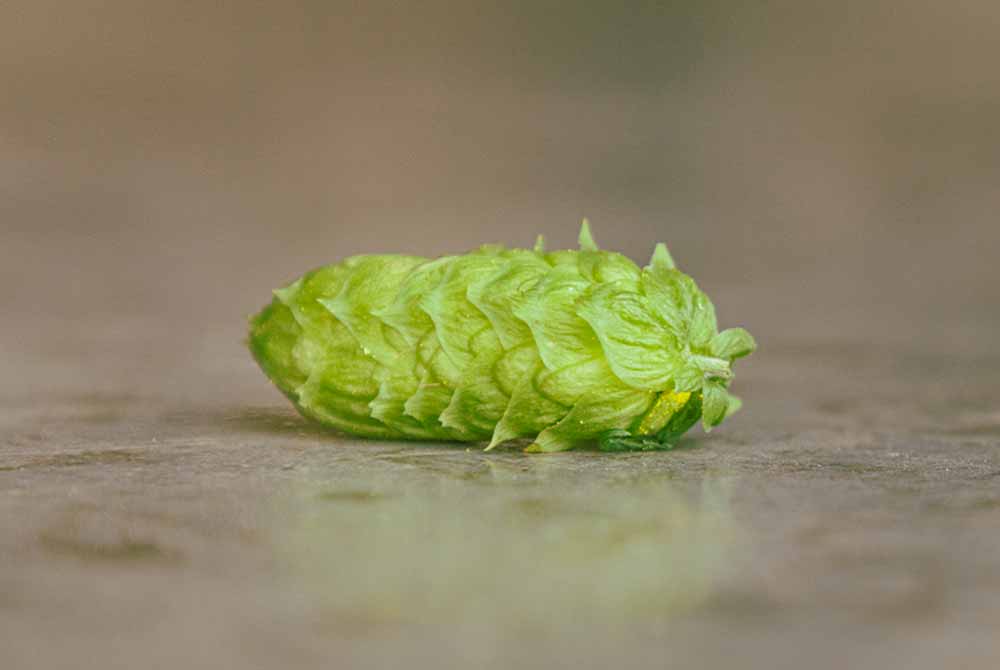
Photography courtesy of Yakima Valley Hops
When talking about the capital-S Science behind thiols, things can start to get pretty complex pretty quickly, but to keep it simple there are essentially two categories of thiols—free and bound (or precursor).
Free Thiols
Free thiols are thiol compounds that are already unlocked and create aromas. For instance, many hops that are well known for their fragrance—Citra, Mosaic, Simcoe and Nelson, to name a few—are higher in free thiols.
It’s these readily available aromatic compounds that make hops like Citra and Mosaic fragrant and subsequently so beloved.
“Free thiols are just that—free—ready to volatilize out of the beer so you can smell them,” says Jennings.
Turns out there is actually a specific scientific logic behind why we love some of the most popular hops in modern craft brewing.
“There is a reason Citra, Mosaic, etc., are the top dogs,” says Chris Mylroie, brewer at Yakima Valley Hops and founder of Shorthead Brewing, who also points out varieties such as Motueka, Chinook, Cascade, and Columbus are high in free thiols.
But what about other hop varieties? Inside those are a ton of what are called precursor forms of these thiols, ones capable of producing aromas, just not in their current state.
Bound/Precursor Thiols
Think of precursor thiols as ones stored inside a safe; they need something to crack into them.
“Bound thiols are not free to make their way to your nose because they are bound to something,” says Jennings. “You won’t smell them; they’ll stay in the glass.”
To “unlock” these bound thiols, specific steps need to be taken during the brewing process.
Perhaps a little metaphor will help here…
Personified, bound thiols are like Clark Kent, the intrepid reporter with a hidden identity that, when triggered, transforms into a superhero, saving the world from certain destruction.
Similarly, bound thiols need specific triggers to morph into those superhero sniffers we all want in our snifters.
How Can Brewers Unlock Bound Thiols?
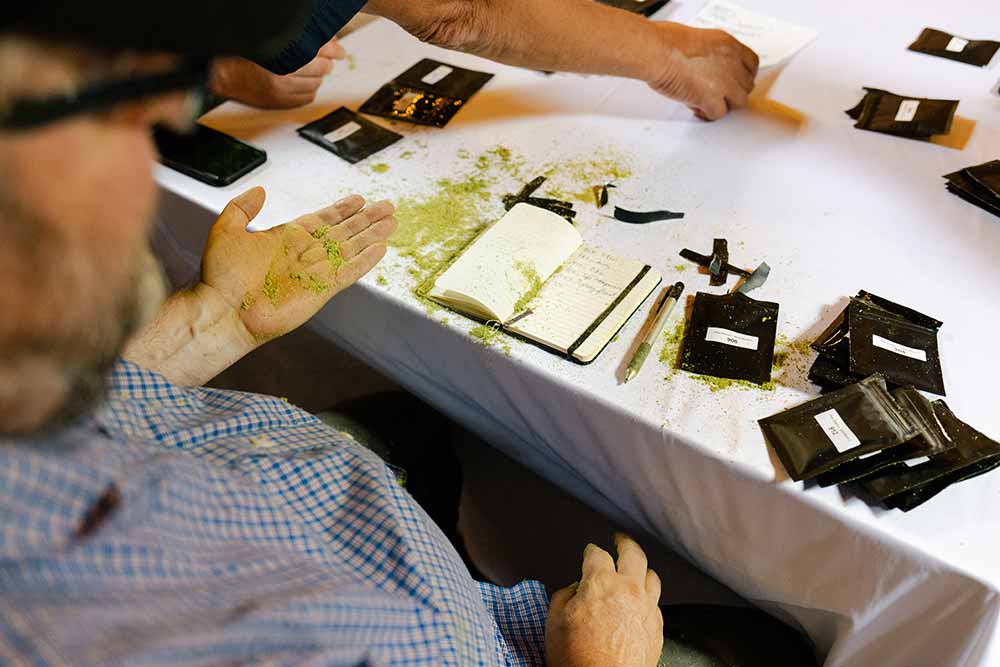
Photography courtesy of Yakima Valley Hops
There are a couple different tools at a brewer’s disposal to transform bound thiols into compounds that give off super aromas.
Thiolized Yeast
The goal of thiolized yeast is to activate those precursors in certain hop and malt varieties to be transformed into free thiols so brewers can leverage those aromatic compounds while brewing.
First engineered by Omega Yeast, thiolized yeast are strains that have been identified and genetically modified to activate those bound/precursor aroma-enhancing thiols in beer.
“What these labs are doing is using this technology for gene editing to modify the DNA of these yeasts to change the way they interact with the substrate they’re in,” says New Image Brewing Founder Brandon Capps in another Next Glass article. “When we say thiolized yeast, what we’re saying is the yeast did not previously have a capability or substantial capability of converting cysteine-amino-acid-bound thiol precursors to free thiols; it now has that ability due to genetic modification where a gene was turned on.”
These engineered yeast strains activate an enzyme needed during fermentation to transform these precursors into free thiols.
“Traditional yeast strains in beer fermentation really struggle to turn on this enzyme at all; it’s not something we normally see in our traditional brewing strains,” says Burns. Meaning that, with a thiolized yeast strain, “now we can express [this enzyme]; it’s active and converting these thiol precursors during fermentation,” says Burns.
Consider it similar to flipping a light switch in a dark room (and these Omega Yeast thiolized yeast strains are the finger). Now with thiolized yeast turning on the proverbial light, brewers are able to unlock those bound thiols in the beer, releasing them into free thiols and producing these highly aromatic compounds.
Hence: more aromatic beer
If you see brewers mention yeast strains like Cosmic Punch, Helio Gazer, or Star Party, those are all thiolized yeasts.
Mash Hopping
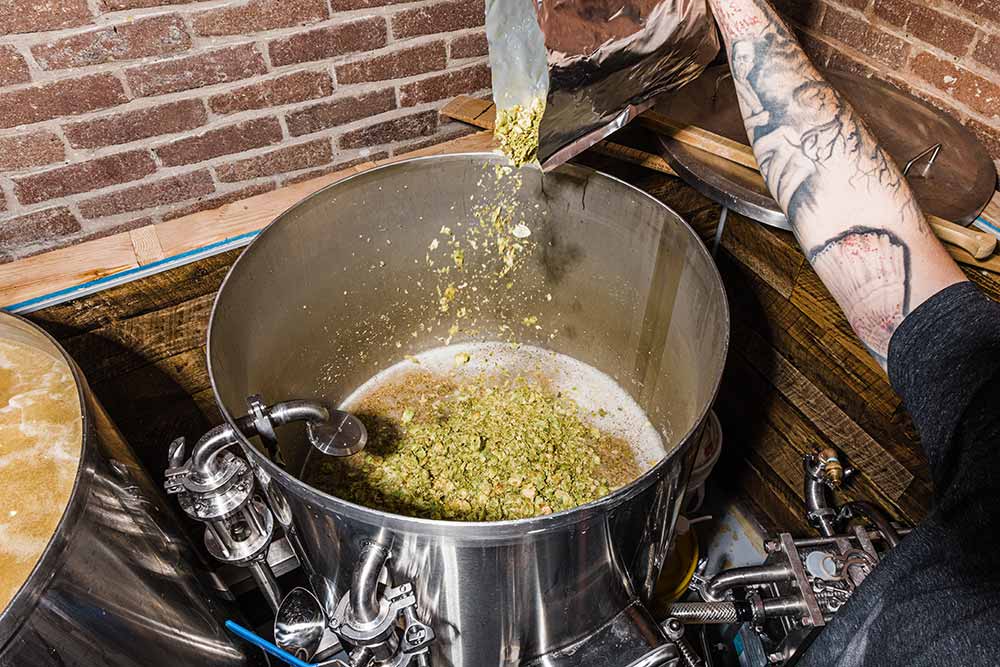
Photography courtesy of Yakima Valley Hops
Mash hopping is actually an old-school brewing technique that has gotten some new-school attention when you add thiols into the conversation.
An idea of front-loading your mash with hops, mash hopping essentially provides your wort with more of the hop thiol precursors for the thiolized yeast to convert during fermentation into thiol aroma.
What it boils down to (yes, that’s a pun) is that brewers basically add hops in during the mash.
“Typically a half pound to one pound of hops per barrel,” says Mylroie. “The compounds in the hops will react with the malt to build these precursors in the finished beer and help them stay around to survive the boil.”
This step is great with hops that are high in bound thiols such as Cascade, “but also have a good amount of bittering potential,” says Jennings. “It’s added in the mash basically using the enzymes already present that function well at mashing temperatures.”
During the mash you’re converting all your starches, “so it’s just a chance to take advantage of all the enzymatic things going on and break down some of the bound thiols,” says Jennings. “It’s another tool that is taking advantage of the conditions already favorable to the enzymes of brewing that exist during the mash.”
Other great hops for mash hopping include Czech Saaz, German Perle, Calypso, Motueka, and Hallertauer Mittelfrüh.
“These are all hops that have three times the level of precursors as some other varieties,” says Burns. “We have really solid data to show that…we’re seeing a twenty- to fifty-percent increase in thiols in fermentation with mash hopping.”
And with thiols, a little truly goes a long way.
How are Thiols Measured?
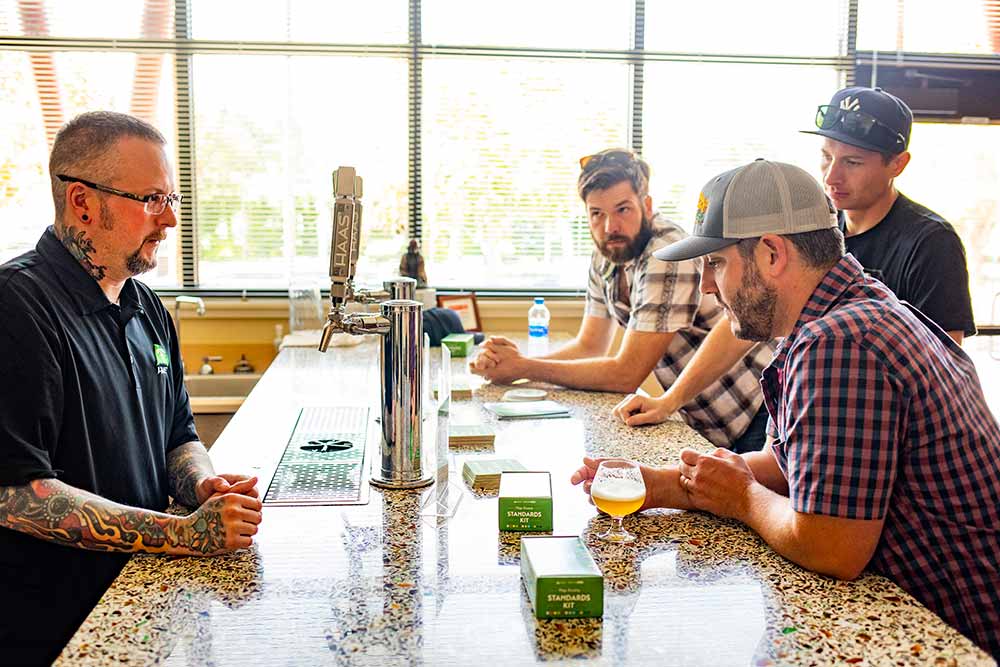
Photography courtesy of Yakima Valley Hops
The key with thiols is that they register on the aromatic threshold in parts per trillion concentrations, meaning “they’re extremely potent,” says Capps, who lays it out this way: “Thiols are a thousand times more aromatic or have a thousand times lower threshold than something like diacetyl or dissolved oxygen, which are measured in parts per billion or parts per million, respectively.”
Basically, thiols are present in very, very, very tiny amounts.
“When talking about how much thiols are in beer, it is analogous to a drop of water in twenty Olympic-sized swimming pools,” says Jennings.
For comparison, according to Jennings, another well-known aroma compound in hops, linalool, has a sensory threshold of about eighty-three parts per billion, which is equivalent to one gallon in twenty Olympic-sized swimming pools. Or myrcene, “a common terpene in both hops and cannabis that imparts a bright, citrus/woody character…has a threshold in the 10-1,000 parts per million range, which is equivalent to over 200 beer barrels in that same volume,” she says.
Capps, who has dived deep into studies and papers on thiols, implementing many techniques into New Image’s own beers, breaks it down like this: “This thing by weight is a trillionth of the product we’re working with, be that hops or malts, but over the last twenty years different labs and studies have peeled back layers: What’s this last .01% of weight by products we’re using and how significant is it?”
Turns out that last little bit is actually pretty significant.
Because the good news?
Humans are actually thiol-smelling machines. “We almost have a superpower for detecting thiols,” says Jennings. “We are more powerful than most instruments that I have in my lab. We can detect thiols with our noses at a level that my four-million-dollar instrument cannot pick up.”
So here’s the big question: What aromas can our supernoses pick up and in what hops?
Top Hops With the Most Thiols
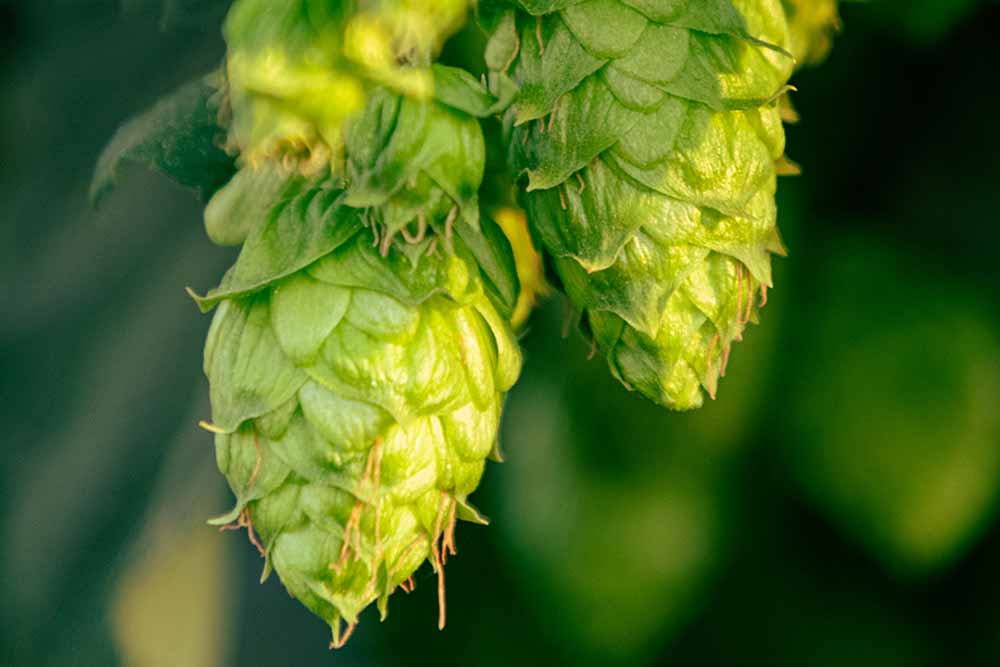
Photography courtesy of Yakima Valley Hops
What we all want to know: What are the hops with the most number of thiols?
Well, like everything else in science, the answer can be complicated and a bit varied.
Some hops are higher in free thiols while others are higher in bound ones.
Some hops have a lot of precursors, but not a lot of free thiols.
And some have both.
Go figure.
In terms of free thiols, Jennings says that hops like Citra, Sabro, Mosaic, Sorachi Ace, and New Zealand varieties like Nelson Sauvin are the highest.
“You really can’t go wrong with Citra and Mosaic,” says Jennings. “They’re a good balance of free and bound thiols; they are always great to use.”
For hops that have a high number of bound thiols, “those tend to be hops like Cascade and Centennial,” says Jennings.
But it also depends on which thiol compound you’re looking to unlock.
Common Bound Thiol Compounds and Their Aromas
Here’s a good starting list of certain bound thiol compounds, the aromas they impart on your beer, and the top hops that contain them.
4MMP/4MSP – “That’s the black currant flavor,” says Jennings. You’ll find 4MMP present in hopped beers in 200 parts per trillion. Hops high in 4MMP include Citra, Cascade, Chinook, Simcoe, Eureka, and Summit, along with Southern Hemisphere varieties like Galaxy and Nelson Sauvin, and even European ones such as Saaz, Strisselspalt, and Mandarina Bavaria.
3MH/3SH – These are fruit-driving aromas ranging from passion fruit to guava. Hops such as Nelson Sauvin, Amarillo, Mandarina Bavaria, Mosaic, Citra, Cascade, Calypso and Tomahawk are high in these thiol compounds.
3MHA – Known for “complex citrus and boxtree rhubarb flavor,” says Jennings, these bound thiols along with the aforementioned 3MH can be found in beers up to 5,000 parts per trillion. Hops that are high in these bound thiols include Citra, Cascade, Herkules, Traditional, Perle, or Saaz.
3MO – Jennings says the aromas from these bound thiols tend to be “like nectarine or white peach flavor. New Zealand varieties such as Nelson Sauvin are really high in these thiols.
3M4MP – With notes of rhubarb and citrus, 3M4MP thiols can be found most readily in Mosaic, Amarillo, and Nelson Sauvin hops.
The cool part about thiols is that we’ve only discovered a small part of the hop galaxy.
“We’re slowly unraveling it,” says Mylroie. “Beer brewers are just starting to peel back the orange a bit and starting to look at everything to get a gauge on what’s making beer.”
Jennings agrees, “As we learn more about thiols and different compounds that have a big impact on aroma and where they’re found, it give brewers more of a toolbox to create these flavors that are dialed into where they want not only in terms of getting a level that’s pleasant but compounds that are particularly delicious that will play well in the beer they want.”
And at the end of the day that’s what we all want, literally, right? A beer to sit down with that punches us in the face with those tropical, fruity aromas we all love.
What Are a Few Beers to Try That Maximize Thiols?
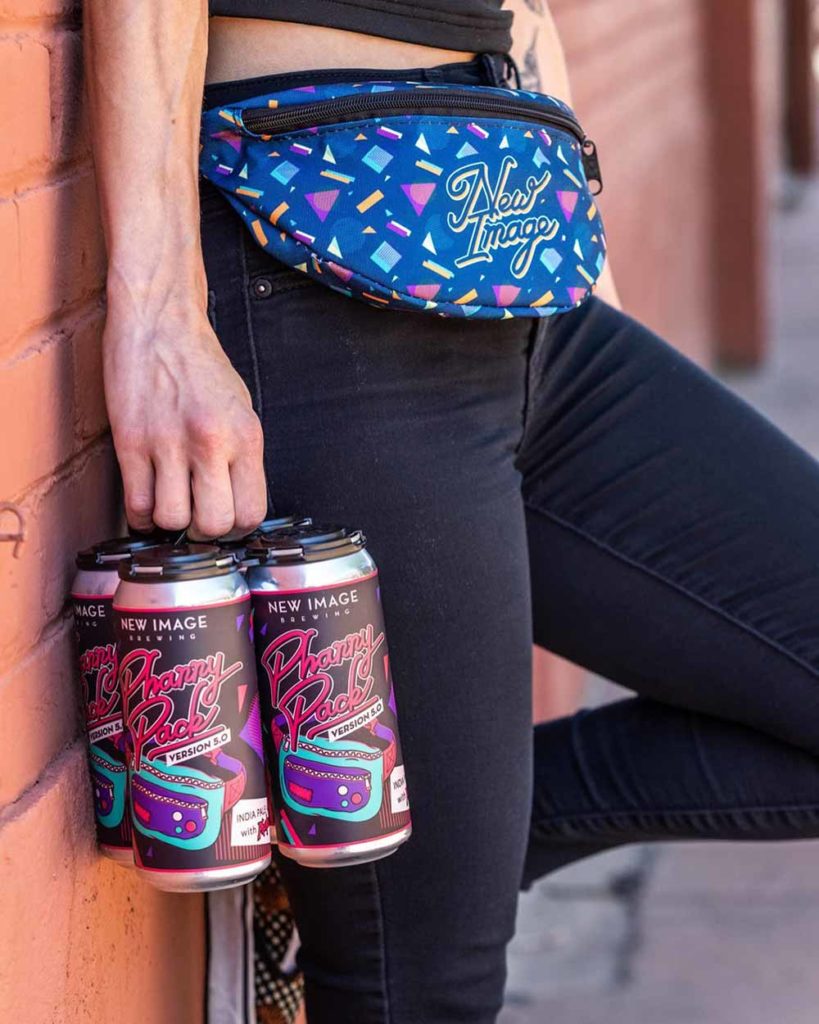
Photography courtesy of New Image Brewing
It’s one thing for us to write until we’re blue in the wrist (if you will) about these incredible beers. But it’s another thing to actually go out and try them.
Here are a few we recommend.
Phanny Pack Series – New Image Brewing
Brewers like Capps have had great success leveraging their research into thiols, experimenting with hops high in thiols, and utilizing thiolized yeast. New Images’ Phanny Pack series, now in its fifth iteration, leverages Omega Yeast’s Cosmic Punch to produce a super fragrant, perfectly balanced hazy IPA with Southern Cross, Citra, Idaho Gem, and Phantasm.
“Currently Phanny Pack is, in my opinion, the best beer we’re making with Cosmic Punch,” says Capps.
Phanny Pack culminates all of Capps’ trials into one now-flagship, year-round series.
With Phanny Pack, “this is a beer that we are brewing with the least batch-to-batch changes in order to really understand the impact of each change,” says Capps, who notes they brewed five different versions before actually settling on what they’re calling ‘the Core.’ “We modify the Core based on what we’re learning from the other series…but we move more slowly and gradually with Phanny Pack to dial in those changes.”
Meaning what New Image produces is a beer that is, to the best of its ability, optimizing thiols and thiolized yeast based on what Capps has read, studied, and implemented in his own beers.
Because at the end of the day, it’s “ultimately, how does the beer taste?” says Capps. “We’re not producing thiols, we’re producing beer that tastes good… That’s the grain of salt that everyone should have in the back of their mind. You don’t want to make a faster plane if the plane is just crashing.”
Gravitron – Shorthead Brewing
A beer featuring Saaz pellets and whole-leaf Cascade along with a dry hop of Citra and Motueka—all high-thiol hops—Gravitron gets an added dose of Incognito and SPECTRUM in the whirlpool and ferments with the thiolized yeast Omega Star Party.
“It was a fruit bomb,” says Mylroie. “Really intense tropical tangerine and bright, bright citrus flavors that were really sweet, but with a little bit of pithiness like grape skin.”
It’s the bold, bright flavors of this beer that really make it stand out.
Polymorph Series – Single Hill Brewing
A hazy IPA series from Single Hill Brewing in Yakima, WA, Polymorph originally started as a beer with three thiolized yeast strains—Omega Cosmic Punch, Star Party, and Berkeley Yeast Tropics.
According to Mylroie, Single Hill fermented three different hazies before blending all three together.
“It was a really good beer,” he says. “I had all three beers and one blended and it was really interesting to see three different directions a hazy IPA could go before being blended all together.”

